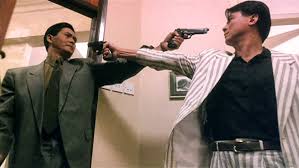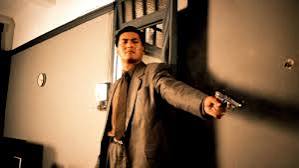John woo "The killer"
Exploring the Legacy of The Killer by John Woo
One of the most important action pictures of its day, The Killer (directed by John Woo and released in 1989) is recognised for establishing new standards for cinematic action and for defining the "heroic bloodshed" genre. The picture, which has enthralled audiences all over the world and influenced several directors, is well-known for its stylised violence, emotionally nuanced characters, and complex plot. Woo's unique vision blended energy and artistry to produce a work that delves deeply into themes of forgiveness, devotion, and the heavy cost of violence, going beyond conventional action clichés. This essay will examine The Killer's story, themes, filmmaking methods, and lasting influence.
Plot Summary
The movie centres on Ah Jong, a professional hitman with a strong sense of honour who is portrayed by Chow Yun-fat. He unintentionally causes vocalist Jennie (Sally Yeh) to become partially blind while on the job. Ah Jong chooses to work one final job to pay for her eye surgery since she feels guilty and responsible for it. But by choosing to assist Jennie, he puts himself in danger from the law as well as his own employer.
Inspector Li Ying (Danny Lee), a devoted police officer who is captivated by Ah Jong's nuanced moral system, is pursuing him. A relationship built on respect is formed between Li and Ah Jong as they play a lethal game of cat and mouse. Despite being on different sides of the law, the two men have a strong sense of moral character and are beginning to comprehend one another's difficulties. As they face their decisions and the lives they lead, this link ultimately turns out to be both a strength and a tragedy.
Themes of Honor, Redemption, and Brotherhood
The Killer is notable in part because it explores subjects that are typically saved for dramas rather than action pictures. The film's central themes are the intricacies of redemption and the concept of honour among criminals. In contrast to the brutality of his bosses, Ah Jong's ethically tormented persona upholds a code of principles. He uses his quest to assist Jennie as a way to make up for the hurt he has caused, demonstrating that even violent people may be inspired by empathy and regret.
Another main focus is Ah Jong and Inspector Li's developing friendship. They form an unspoken kinship despite their animosity, which is consistent with Woo's recurrent motif of "brotherhood." Unable to break free from the demands made on them, both men are enmeshed in a vicious cycle of violence. They exemplify Woo's message about the human cost of a life lived in pursuit of duty when they express their common sense of duty and their conflicts with their responsibilities in society in one of the film's most famous moments.
Woo’s Cinematic Style: The Heroic Bloodshed Genre
John Woo became known as a master of stylised action thanks in part to The Killer. The picture has a poetic flavour thanks to Woo's use of slow motion, staged gunfights, and symbolic imagery, especially his recurrent motif of doves representing calm in the midst of mayhem. These components form the basis of the "heroic bloodshed" genre, which consists of heroes who are held to a code of honour and frequently struggle for atonement in a violent and treacherous environment.
Woo is known for his "gun-fu" approach in The Killer, which combines martial arts choreography with gunplay. Shootouts are transformed into elegant, nearly balletic moments by the careful staging of each action phase. Slow motion highlights the characters' reactions, suffering, and resolve, heightening the emotional effect. Woo's approach emphasises the personal concerns and draws viewers into the characters' inner struggles rather than just offering entertainment.
Impact and Legacy
Hollywood in particular has been impacted by The Killer for a long time. Woo has been mentioned as an influence by filmmakers like Quentin Tarantino, Robert Rodriguez, and the Wachowskis. His style of action influenced many filmmakers to include emotionally charged, visually striking gunfights in their films. Woo's use of slow-motion scenes and coordinated gunplay is echoed in films like Pulp Fiction, Desperado, and The Matrix.
Because it raised Hong Kong filmmakers' profile internationally and established a standard for action films worldwide, the movie also has a special place in the annals of Hong Kong cinema. Because to his memorable performance as Ah Jong, Chow Yun-fat became a global celebrity and came to represent the ethically dubious anti-hero. A more nuanced portrayal of law enforcement and criminality, which was uncommon in action films prior to The Killer, was shown to viewers through the complicated connection between Ah Jong and Li Ying.
Conclusion
More than merely an action film, The Killer is a compelling examination of honour, morality, and the quest for atonement. Chow Yun-fat's outstanding performance and John Woo's innovative directing have solidified the movie as a classic, inspiring future generations of filmmakers. Woo reinvented the action genre and produced a story that speaks to people on a human level by fusing powerful action with thought-provoking topics. The Killer's influence lives on in both the film industry and society at large, where it continues to be a seminal illustration of how substance and style can work together to produce a masterpiece.


😊👍🏻👍🏻👍🏻